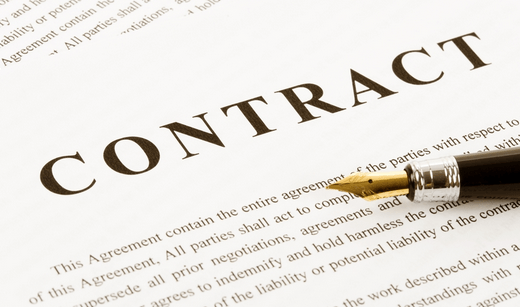

As of Thursday, computer models suggest Hurricane Irma could hit South Florida and then go up the state's east coast. The storm has tornado-strength winds.
- Hurricane Irma slammed into several Caribbean islands as a "potentially catastrophic" Category 5 storm on Wednesday, killing at least 10 people.
- The National Hurricane Center's projected path shows Irma arriving in South Florida over the weekend and traveling up the state's east coast.
- Florida Gov. Rick Scott has activated the state's National Guard, and parts of South Florida are under mandatory evacuation orders.
- President Donald Trump has declared a state of emergency for Florida in anticipation of the storm.
After steamrolling several Caribbean islands, Hurricane Irma appears to be near the Turks and Caicos Islands and heading towards the Bahamas, according to the latest forecast. After that, its path leads straight to South Florida, parts of which are under hurricane and storm-surge watches as of 5 p.m. ET Thursday.
Irma, one of the most powerful Atlantic hurricanes in recorded history, has killed at least 10 people, according to reports.
As of Thursday evening, hurricane warnings have been issued for Turks and Caicos, the Bahamas, and parts of Cuba, the Dominican Republic and Haiti, where the storm is expected to arrive shortly. In Florida, a hurricane watch is in effect for Jupiter Inlet southward around the peninsula to Bonita Beach, the Florida Keys, Lake Okeechobee, and Florida Bay.
The initial damage from the storm was observed on Wednesday in Barbuda, an island east of Puerto Rico. Gaston Browne, the prime minister of Antigua and Barbuda, said Barbuda was "totally demolished," with 90% of its buildings destroyed.
According to The Associated Press, officials in Antigua and Barbuda had told residents to seek shelter from Irma's "onslaught" in a statement that closed with: "May God protect us all." The AP also reported that fierce winds there lifted the roof off a police station, prompting officers to take shelter in a nearby fire station. Communication with the island was cut off because of the destruction.
Irma wreaked havoc in St. Martin and St. Barts as well, devastating popular tourist destinations, and slammed the Virgin Islands before passing just north of Puerto Rico. Winds were still strong enough to cut off power to half the island's residents, however, and reports suggest some may not regain electricity for months.
The National Hurricane Center's latest forecast for Irma projects the centerline of the Category 5 storm going right by Miami before heading up Florida and then into Georgia. Irma is big and powerful enough to affect most of Florida even if it stays offshore. If the storm does head up the middle of the state, it's wide enough that both coasts could experience major hurricane-force winds.
"Even if Irma does take this trajectory passing directly over the eastern coast, we certainly would expect it to impact the whole state," James Belanger, a senior meteorological scientist with The Weather Company, the group behind the Weather Channel and Weather Underground, told Business Insider on Wednesday.
Though it's too soon to say for certain where the storm will go, the forecast strongly suggests Irma will hit South Florida as a major hurricane early Sunday, with tropical-storm-force winds arriving Saturday. As a result, US and state officials are urging people to ready their emergency plans and supplies.
"We do not know the exact path of this storm, but weather can change in an instant, and while we hope for the best, we must prepare for the worst," Gov. Rick Scott of Florida said in a Tuesday statement. Florida and Georgia have both issued evacuation orders from parts of both states.
Irma's intensity
Irma formed off the coast of western Africa last week and almost immediately started crossing the Caribbean Sea. Phil Klotzbach, a meteorologist at Colorado State University specializing in Atlantic hurricanes, told Business Insider last week that a combination of conditions — including a warm tropical Atlantic, a weak wind shear, and a change from drier to wetter weather — made it easy for Irma to pick up strength.
Irma officially became a named storm on August 30 and was classified as a hurricane the next day. Since then, it has gained and kept strength from the moisture of unusually warm waters in the Atlantic Ocean and the Caribbean Sea. Its sustained wind speeds of 185 mph for 37 hours set a record for the longest a cyclone has maintained that intensity.
The Category 5 label means Irma has sustained winds of at least 157 mph near its core. The latest "hurricane hunter" airplane measurements suggest the storm's sustained winds top 175 mph, though gusts have been recorded above 215 mph. That makes Irma the strongest hurricane ever measured in the Atlantic Ocean (outside of the Caribbean Sea or the Gulf of Mexico, where Hurricane Allen still holds the record).
The storm's winds are as powerful as those of a severe tornado, which can tear off roofs, level homes, toss cars, overturn trains, and uproot large trees.
Irma also threatens the Caribbean and US with storm surge, a crest of water formed ahead of a storm by powerful winds. The NHC suggests that parts of the Bahamas, for example, may see a storm surge with a height of 20 feet above a typical high tide, though forecasts differ greatly among regions.
"Some fluctuations in intensity are likely during the next day or two, but Irma is forecast to remain a powerful Category 4 or 5 hurricane during the next couple of days," the NHC said in a public advisory on Wednesday. It also called Irma a "potentially catastrophic" hurricane and advised that preparations "should be rushed to completion" in all hurricane warning areas.
That main forecast is that Irma will remain a Category 5 hurricane until Saturday, then become a Category 4 storm.
"But one of the things we need to keep in mind is that some of the guidance is that the storm is going to maintain [strength]," Belanger said, adding that "it's possible the storm could strengthen further" as it passes over warm waters on the way to the Bahamas.
Possible landfall in the US
Forecasters don't know for certain whether Irma will make landfall in the US, let alone as such a powerful storm. But the latest computer models make it look likely — two of the most predictive models show that South Florida and Miami are in Irma's path. Warm water in Irma's path could help the storm retain Category 5 strength the whole way.
Irma could also "impact Georgia and South Carolina, but it could even make its way into the western Gulf," Belanger said Wednesday, though that's not the most likely track. Now, Florida looks more and more probable. "It's important that people monitor the official forecast," said Belanger.
To prepare for Irma, Scott ordered all 7,000 members of Florida's National Guard to report for duty on Friday morning. Miami-Dade County is also evacuating many of the lowest-lying areas prone to storm surge, including Miami Beach.
The Florida Keys, meanwhile, are closing schools and issued a mandatory evacuation order for all visitors and residents starting Wednesday morning. Other parts of South Florida have done the same, with more 100,000 residents affected so far.
Trump declared states of emergency in Florida, Puerto Rico, and the US Virgin Islands on Tuesday evening to free up federal resources for a major response to the storm.
A busy hurricane season
Irma, the season's fourth hurricane, has already put the Atlantic far ahead of the average accumulated cyclone energy — a measure of the energy of tropical cyclone systems — for this time of year. Klotzbach said that half of a season's cyclone energy usually occurs in September. But as of Wednesday, there had already been enough cyclone energy to meet the definition of an average season.
Both Colorado State University and The Weather Company predicted an unusually active hurricane season this year. Irma is the fourth hurricane of 2017, though the average date of the fourth hurricane in a year is September 21. Three hurricanes — Irma, Jose, and Katia — are swirling in the Atlantic, though the peak of the season is not until September 10.
Jose, which is east of Irma, reached major hurricane strength on Wednesday afternoon and could also make its way toward the Caribbean. Katia, located off the coast of Mexico, reached hurricane strength on Wednesday as well.
Big hurricanes are usually defined by their wind force, but as seen with Hurricane Harvey, which made landfall late last month as a Category 4 hurricane but caused most of its damage with heavy rain, the number doesn't always accurately predict a storm's impact. And there's no category above 5, making it hard to differentiate among even more severe storms. Here's what the scale means:
This is a developing story. Find all of Business Insider's latest Hurricane Irma coverage here.
As of Thursday, computer models suggest Hurricane Irma could hit South Florida and then go up the state's east coast. The storm has tornado-strength winds. Read Full Story


















Facebook
Twitter
Pinterest
Instagram
Google+
YouTube
LinkedIn
RSS